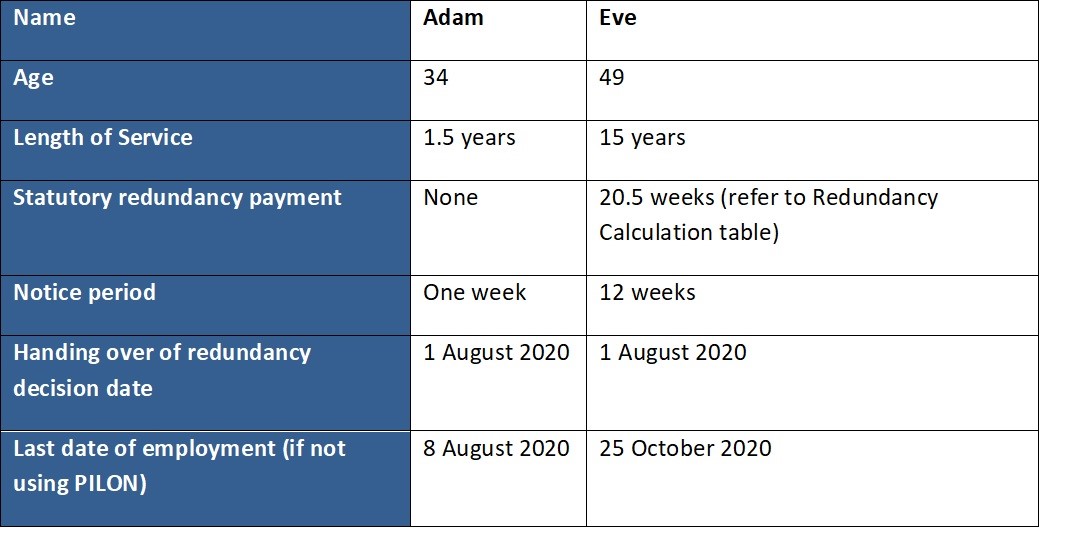Who Pays Redundancy Money? Recognizing Employer Responsibilities in the UK
Who Pays Redundancy Money? Recognizing Employer Responsibilities in the UK
Blog Article
Exploring the Interaction In Between Company Redundancy and Organizational Versatility for Future Development
In the vibrant landscape these days's organization world, the intricate connection between business redundancy and organizational versatility becomes a crucial aspect for sustained development and success. Companies commonly face the obstacle of striking a delicate equilibrium in between preserving a degree of redundancy to alleviate risks and cultivating versatility to respond swiftly to the ever-evolving market needs. This fragile interplay holds the essential to not only making it through in rough times yet additionally prospering when faced with unpredictability. As we discover the multifaceted measurements of this interaction, fascinating understandings into just how companies navigate these complexities to lead the means for future growth wait for.
Significance of Business Redundancy
Firm redundancy is an essential aspect that improves business resilience and minimizes functional risks. By including redundancy measures within the organizational structure, companies can better stand up to unforeseen interruptions and fluctuations in business setting. Redundancy works as a tactical barrier, enabling firms to adapt and react effectively to unexpected difficulties without endangering essential procedures.
One trick facet of the importance of company redundancy is its role in guaranteeing continuity during times of crisis. When faced with sudden changes or emergencies, repetitive systems, sources, or personnel can step in to preserve important features and protect against prevalent disruptions. This connection not just safeguards the firm's online reputation and consumer trust yet likewise minimizes monetary losses and functional downtime.

Strategies for Business Flexibility

One more crucial method is investing in innovation and framework that can support versatility and scalability. Implementing digital tools, automation, and information analytics can streamline operations, enhance performance, and offer useful insights for notified decision-making. Additionally, developing adaptable organizational frameworks that enable quick changes to market characteristics and customer requirements is essential for staying affordable in a rapidly progressing setting. By proactively identifying prospective interruptions and possibilities, companies can proactively flourish and adjust in an ever-changing service landscape.
Balancing Redundancy and Adaptability
Achieving an unified balance between operational redundancy and organizational adaptability is paramount in browsing the intricacies of a vibrant company atmosphere. Redundancy within a firm supplies a security net, ensuring connection and stability in procedures. Nonetheless, an unwanted of redundancy can cause ineffectiveness and hinder adaptability to changing market problems. On the other hand, organizational flexibility enables firms to react immediately to exterior interruptions and confiscate brand-new opportunities. Striking the ideal balance in between redundancy and adaptability is a fragile process that needs a deep understanding of the company's goals, sector characteristics, and danger tolerance.
To achieve this balance, business need to carry out routine analyses of their procedures to determine locations where redundancy is needed for threat reduction and where flexibility can drive technology and development. Applying adaptable frameworks, cultivating a culture of continuous knowing and enhancement, and urging open interaction across all levels of the organization are essential approaches to integrate redundancy and flexibility properly. By straightening these two essential elements, companies can position themselves for sustainable growth and success in an ever-changing business landscape.
Case Studies on Adaptation Success
In examining instances of successful business adjustment, it comes to be evident that the interplay between operational redundancy and versatility is a specifying variable in forming resilient companies. One compelling case study is that of Netflix. Initially a DVD rental solution, Netflix demonstrated exceptional versatility by transitioning right into a streaming system when digitalization interrupted the industry. By strategically purchasing technology and content production, Netflix not only made it through but grew in a quickly evolving market. An additional standout example is Amazon. Beginning as an on the internet bookstore, Amazon continually adapted its organization design, expanding right into diverse markets such as cloud computing and expert system. This flexibility permitted Amazon to remain ahead of rivals and meet changing consumer needs. Lastly, Adobe supplies a significant picture of effective adaptation. The firm shifted from offering software this post licenses to a subscription-based design, making certain repeating revenue streams and improved client engagement. These study underscore the relevance of functional redundancy coupled with organizational flexibility in promoting long-term growth and competition.
Building Strength for Future Growth
Building strength for future development requires a strategic positioning of operational processes with market dynamics and arising fads. Firms have to adjust to altering atmospheres by fostering you could look here a culture of adaptability, technology, and continual enhancement. Durability involves not just recuperating from obstacles however also proactively preparing for future challenges. One vital element of building resilience is spending in robust risk monitoring methods to alleviate prospective disruptions. This includes scenario preparation, branching out supply chains, and establishing contingency prepare for different contingencies (who pays redundancy money).
In addition, cultivating strong relationships with stakeholders, such as customers, staff members, vendors, and the neighborhood, is necessary for keeping and weathering unpredictabilities count on and support throughout stormy times. Efficient interaction and transparency play a vital function in building durability, as they help assist in and align assumptions partnership in browsing unpredictabilities.
Furthermore, companies need to focus on learning and advancement initiatives to upskill workers and outfit them with the required devices to adapt to changing scenarios. By purchasing their labor force, business can enhance their flexibility and dexterity, eventually strengthening their strength for sustainable future development.
Final Thought

In the dynamic landscape of today's service world, the complex relationship in between company redundancy and business adaptability arises as a critical aspect for continual growth and success. Business frequently encounter the challenge of striking a fragile balance in between maintaining a degree of redundancy to alleviate threats and promoting adaptability to react promptly to the ever-evolving market demands.To accomplish this equilibrium, business need to perform normal assessments of check over here their operations to identify areas where redundancy is needed for threat reduction and where adaptability can drive development and growth.In conclusion, the interaction between business redundancy and organizational adaptability is important for future growth. Structure resilience through a combination of redundancy and adaptability will guarantee that business are prepared for the difficulties of the future.
Report this page